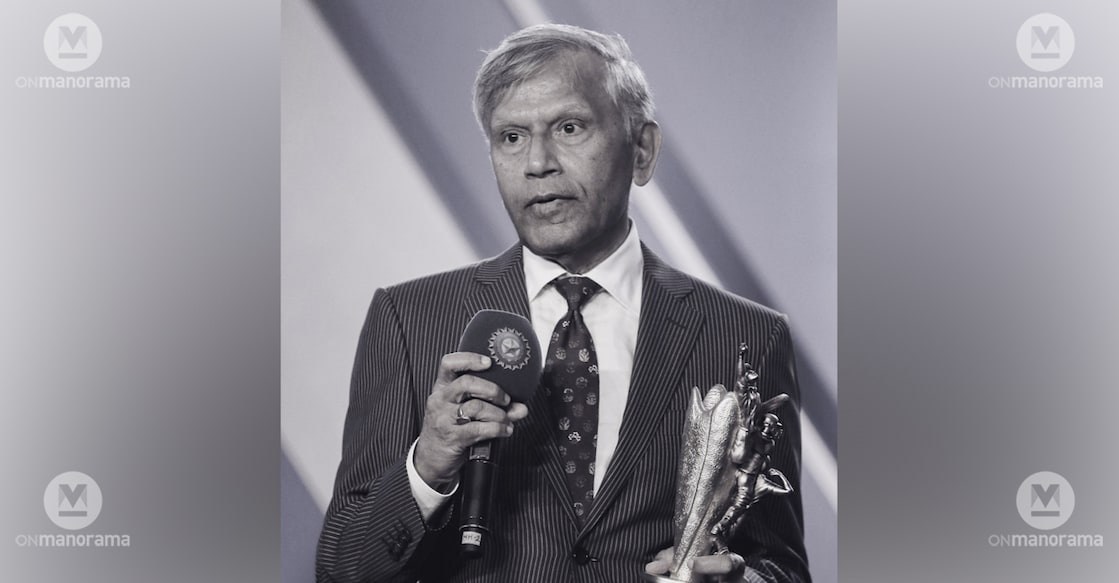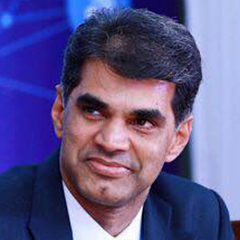Dilip Doshi and Padmakar Shivalkar: Unsung titans of Indian spin

Mail This Article
The 1960s and 1970s were a period when Indian cricket was blessed with a surfeit of left-arm spin bowlers. In the years immediately following World War II, Vinoo Mankad was the leading left-arm spin bowler in the world. When he left the scene towards the end of the sixth decade of the 20th century, his place in the national squad was taken up by Salim Durani, a moody genius, and Bapu Nadkarni, a bowler who had parsimony as his middle name.
However, towards the end of 1966, a new phenomenon named Bishen Singh Bedi arrived on the international arena, and he completely dominated the landscape during the next 12 years, till he was dropped from the national squad at the close of the tour to England in 1979. The cricketer who took the place of Bedi in the Indian side was Dilip Doshi, a bespectacled bowler who hailed from Saurashtra but played for Bengal in domestic cricket.
However, in this period, there were many talented left-arm spin bowlers on the Indian cricketing horizon. In addition to Doshi, there was Rajinder Goel, the holder of the record for highest number of wickets in Ranji Trophy, Padmakar Shivalkar, who carried the load of bowling of the all conquering Mumbai side, Rajinder Singh Hans, the doughty fighter from Uttar Pradesh and Ekanath Solkar, the outstanding fielder whose usefulness with the ball, both as a spinner and a seam bowler, was utilised by captains at all levels from club cricket upwards. In addition, there was the hugely talented Mumtaz Hussain, who started his career as a left-arm unorthodox bowler whose googlies foxed even the legendary Sunil Gavaskar in the university games, but was forced to bowl orthodox spin once he started playing the game at the first-class level. This change in style, under pressure from team management in Hyderabad, spoiled his rhythm, and he ended up as another trundler in an already overcrowded field. This must have been one of the few errors of judgment made by ML Jaisimha, the shrewd captain of Hyderabad, who was counted as one of the best strategists in the game.

Amongst the above lot, Doshi was definitely the luckiest as he was not considered too old to be considered for a place in the national squad when Bedi left the scene. In fact, national selectors had included both Doshi and Hans in the squad, but skipper Sunil Gavaskar chose the former to be part of the playing eleven. It was rumoured that Gavaskar was influenced by a word put in by Rohan Kanhai, the West Indian legend, with whom Doshi played for Warwickshire in English county cricket. Doshi was past 30 when he received the much sought-after India cap and he lost no time in proving his mettle at the highest level. In his very first Test at Chennai against the touring Aussie side in 1979, Doshi returned with match figures of 8 wickets for 167 runs (6/103 and 2/64). He soon cemented his place in the side with a match-winning performance in the last Test of the series at Mumbai, where he bagged eight wickets.
When Pakistan toured India in the same season, Doshi played the role of an effective foil to pace bowling of Kapil Dev, keeping one end tight while picking up vital wickets. His tally of 18 wickets in six Tests does not tell the whole story about the role he played in ensuring the supremacy of Indian bowlers over the Pakistani batsmen. His ability to bowl long spells without conceding many runs helped to maintain the pressure on the batsmen, which the pace bowlers, led by Kapil Dev, utilised to the full to pick up wickets.

Doshi’s finest hour came in January 1981, when he battled a broken bone in his toe and played a key role in India's win over Australia in the final Test of the series at Melbourne. Chasing a last innings target of 124, Doshi came on to bowl very early and kept one end tight, even as Karsan Ghavri picked up early wickets and Kapil Dev ran through the middle order and the tail. The two wickets that Doshi picked up, Graeme Wood and Kim Hughes, were invaluable ones, as these were the two batsmen who had the technique to survive on the crumbling pitch. It was only after the match had ended that he informed Gavaskar about his broken toe, which did not please the Indian skipper much.
Doshi blamed Gavaskar for his “early” exit from the national side. He felt that Gavaskar promoted Ravi Shastri first and then Maninder Singh over him, thus undermining his position. The level of confidence that the skipper had in Doshi came down drastically, and he was dropped from the playing eleven after the fourth Test of the tour to Pakistan in 1982-83. He was given one final opportunity against the touring Pakistanis in 1983 and played in the first Test of that series. But he could not pick up many wickets and was discarded by the national selectors after that.
After retirement, Doshi went into his family business, which included the dealership of the prestigious "Mont Blanc" pens. He also wrote his autobiography titled "Spin Punch", where he threw a few punches at Gavaskar, which did not amuse his former skipper and paved the way for his exit from the national cricket firmament. However, this episode should not sully his contributions as a top-class left-arm spinner, capable of sending down over after over, with unerring accuracy. He was one of the few Indian cricketers to play for an English county during the 1970s and made a name for himself there by the sheer strength of his performances. His tally of 898 wickets in first-class cricket stands as proof of his acumen with the ball. He also picked up 114 wickets in the 33 Tests that he played.

As we pay homage to Doshi, we should also remember Padmakar Shivalkar, another great left-arm spin bowler who passed away a couple of months ago. He was the spearhead of the Mumbai attack during the decade and a half between the exit of Nadkarni and the arrival of Ravi Shastri in 1980. He made his debut in first-class cricket during the 1961-62 season but found a permanent place in the then Bombay team in the Ranji Trophy only from 1965-66. He continued playing at this level till 1987-88, even coming back from retirement to play a couple of games in his final season to help his beloved side.
This was the period when Mumbai was the strongest side in domestic cricket, winning the Ranji Trophy for 12 times. Incidentally, the first eight years of Shivalkar’s first-class career coincided with Mumbai’s dream run of 15 consecutive championship titles, which lasted till the end of the 1972-73 season.
The Ranji Trophy finals, played between Mumbai and Tamil Nadu in Chennai in March 1973, saw Shivalkar at the peak of his prowess when he single-handedly spun his side to victory. The hosts had prepared a turning track at Chepauk to help the spin duo of Venkataraghavan (Venkat) and Vaman Kumar. Venkat was having a very successful season, having picked up 50 wickets in this championship before the finals started, while Kumar had announced that he would be retiring from first-class cricket after that season. Hence, Tamil Nadu Cricket Association must have thought that preparing an underprepared pitch to aid this spin duo was the best possible way to win the championship and give Kumar a perfect send-off.

This strategy appeared to have paid off when Tamil Nadu dismissed the famed Mumbai batting line-up for a paltry total of 151, with Venkat and Kumar picking up 5 wickets each. The host batsmen also got off to a good start to reach a score of 61 runs for 2 wickets when play closed on day one. But on the second day, Shivalkar displayed his true calibre as he ran through the Tamil Nadu side and picked up eight wickets, conceding just 16 runs, as the hosts were dismissed for a total of 80. Mumbai managed to score 113 in their second outing, leaving Tamil Nadu a final innings target of 185 runs. Shivalkar ensured that they stood no chance of coming anywhere close to this as he again made the batsmen run in circles to pick up five wickets. This time he was helped by Solkar, who too bagged five wickets as Mumbai coasted to a 123-run win.
Once Shastri consolidated his position in the Mumbai side and the national team, Shivalkar decided to bow out. He announced his retirement from first-class cricket at the end of the 1980-81 season, and could do this on a happy note, as Mumbai lifted the trophy this time as well, despite the top players being away on national duty in Australia and New Zealand. But he continued to play the game in Mumbai maidans, turning up at Shivaji Park regularly for practice and to pass on words of wisdom and encouragement to the up and coming cricketers.
Shivalkar was brought out of his retirement when Mumbai qualified for the knock out stage of the Ranji Trophy championship in the 1987-88 season. It was at the insistence of Sandip Patil, who was coaching the Mumbai side, that Shivalkar was drafted into the team at the age of 48 years. He played in the pre-quarter-final match against Karnataka, where he bowled 46 overs and picked up the crucial wickets of Gundappa Viswanath and Roger Binny, conceding 95 runs. It was Shivalkar’s bowling that helped Mumbai to clinch a narrow 12-run lead in the first innings, which helped them to move into the last eight stage. It was a tribute to Shivalkar’s fitness levels and his commitment to the game that he could walk back into the fancied Mumbai squad seven years after his retirement and bowl 46 overs without any difficulty, when he was 48.
For the record, Shivalkar picked up 589 wickets in first-class matches, of which 361 were for Mumbai in Ranji Trophy games. He also had a haul of 16 scalps in limited overs’ matches at first-class level. But as in many cases, statistics do not tell the whole story about the greatness of Shivalkar or the legacy that he nurtured in Mumbai cricket. He was one of the strongest cricketers mentally, displaying a typical “khadoos” or “I shall not crack nor give up” attitude whenever he stepped on the playing field. Board of Control for Cricket in India (BCCI) honoured him with “CK Nayudu Lifetime Achievement Award” in 2017, in recognition of his valuable contributions to the game. It was this dedication and love for the game that prompted Gavaskar to pen a chapter on him in his book “Idols”, which carried biographical sketches of his favourite 31 cricketers from around the world.
Rest in peace, Dilip Doshi and Padmakar Shivalkar. Your contributions to Indian cricket will be remembered as long as the game is played in this country.


